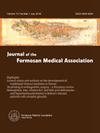The association between vitamin D consumption and gallstones in US adults: A cross-sectional study from the national health and nutrition examination survey
IF 2.6
3区 医学
Q1 MEDICINE, GENERAL & INTERNAL
引用次数: 0
Abstract
Background
Gallstone disease is common in the US and Europe. Gallstones are associated with factors such as age, sex, weight, and serum cholesterol levels. A complex relationship exists between vitamin D levels and cholesterol metabolism. However, the relationship between vitamin D level and gallstones remains unclear. This study aimed to investigate whether gallstones are associated with dietary vitamin D (D2+D3) consumption (VDC) in American adults.
Methods
This cross-sectional study used data from people who participated in the National Health and Nutrition Examination Survey between March 2017 and March 2020. Multivariate logistic regression models were used to determine the association between vitamin D intake and the presence of gallstones. Stratified and interaction analyses were performed to determine whether the relationship was stable across different subgroups.
Results
6873 participants were included. VDC (per 1 SD) was positively associated with gallstones in the crude model (OR: 1.11, 95% Confidence Interval (CI): (1.05–1.17); p < 0.001), Further adjustment did not affect the results. When vitamin D was analyzed using quartiles, with increased quartile of VDC, the incidence of gallstones increased, and the OR of Q2 (OR: 1.08, 95% CI: 0.89–1.32, p = 0.436) and Q3 (OR: 1.55, 95% CI: 1.28–1.87, p < 0.001) was higher than that of Q1 in crude model. After adjusting for covariates, there is a positive association between VDC and incidence of gallstones without statistical significance.
Conclusion
VDC was positively associated with the incidence of gallstones, however, further studies are required to gather additional evidence.
美国成年人维生素 D 摄入量与胆结石之间的关系:一项来自全国健康与营养状况调查的横断面研究。
背景在美国和欧洲,胆石症很常见。胆结石与年龄、性别、体重和血清胆固醇水平等因素有关。维生素 D 水平与胆固醇代谢之间存在着复杂的关系。然而,维生素 D 水平与胆结石之间的关系仍不清楚。本研究旨在调查胆结石是否与美国成年人的膳食维生素 D(D2+D3)摄入量(VDC)有关。方法本横断面研究使用了 2017 年 3 月至 2020 年 3 月期间参加全国健康与营养调查的人群数据。多变量逻辑回归模型用于确定维生素 D 摄入量与胆结石存在之间的关联。进行了分层分析和交互分析,以确定不同亚组之间的关系是否稳定。在粗略模型中,维生素DC(每1 SD)与胆结石呈正相关(OR:1.11,95% 置信区间(CI):(1.05-1.17);p < 0.001),进一步调整不会影响结果。当使用四分位数分析维生素 D 时,随着 VDC 四分位数的增加,胆结石的发病率也随之增加,在粗略模型中,Q2(OR:1.08,95% CI:0.89-1.32,p = 0.436)和 Q3(OR:1.55,95% CI:1.28-1.87,p < 0.001)的 OR 值高于 Q1。在调整协变量后,VDC 与胆结石发病率呈正相关,但无统计学意义。
本文章由计算机程序翻译,如有差异,请以英文原文为准。
求助全文
约1分钟内获得全文
求助全文
来源期刊
CiteScore
6.50
自引率
6.20%
发文量
381
审稿时长
57 days
期刊介绍:
Journal of the Formosan Medical Association (JFMA), published continuously since 1902, is an open access international general medical journal of the Formosan Medical Association based in Taipei, Taiwan. It is indexed in Current Contents/ Clinical Medicine, Medline, ciSearch, CAB Abstracts, Embase, SIIC Data Bases, Research Alert, BIOSIS, Biological Abstracts, Scopus and ScienceDirect.
As a general medical journal, research related to clinical practice and research in all fields of medicine and related disciplines are considered for publication. Article types considered include perspectives, reviews, original papers, case reports, brief communications, correspondence and letters to the editor.

 求助内容:
求助内容: 应助结果提醒方式:
应助结果提醒方式:


